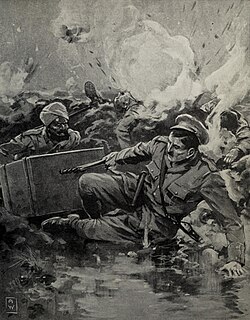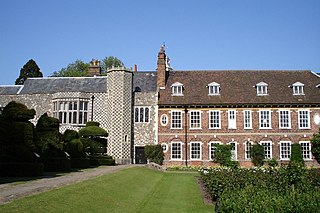
The Page baronetcy of Greenwich, Kent, was a title in the Baronetage of Great Britain. It was created on 3 December 1714 during the reign of King George I of Great Britain for wealthy London merchant and Member of Parliament, Gregory Page. Three successive generations of the same family were each named Gregory Page: the first baronet's father, who was also a merchant in London, and the first and second baronets. The baronetcy became extinct on the death of the childless second baronet in 1775.

There have been six baronetcies created for persons with the surname Smyth, two in the Baronetage of England, one in the Baronetage of Great Britain, one in the Baronetage of Ireland and two in the Baronetage of the United Kingdom. One creation is extant as of 2010.
Nineteen baronetcies have been created for persons with the surname Hamilton, eight in the Baronetage of Nova Scotia, one in the Baronetage of England, five in the Baronetage of Ireland, one in the Baronetage of Great Britain and four in the Baronetage of the United Kingdom. As of 2008 two creations are extant, two are dormant, two are either extinct or dormant and twelve extinct.

There have been two Baronetcies created for persons with the surname Austen, one in the Baronetage of England and one in the Baronetage of Great Britain. Both creations are extinct.
The High Sheriff of Monaghan was the British monarch's representative in County Monaghan, a territory known as his bailiwick. Selected from three nominated people, he held his office over the duration of a year. He had judicial, ceremonial and administrative functions and executed High Court Writs.

There have been four baronetcies created for persons with the surname Hope, three in the Baronetage of Nova Scotia and one in the Baronetage of the United Kingdom. As of 2010 one creation is extant, one dormant and two extinct.

There have been two baronetcies created for persons with the surname Freke, one in the Baronetage of Great Britain and one in the Baronetage of Ireland.
There have been three baronetcies created for persons with the surname Osborne, two in the baronetage of England and one in the baronetage of Ireland. Two creations are extant.

Sir Capel Molyneux, 3rd Baronet PC (Ire) was an Irish politician.

Thomas Taylour, 1st Marquess of Headfort, styled Viscount Headford from 1766 to 1795, and known as The Earl of Bective from 1795 to 1800, was an Irish peer and politician.
There have been two baronetcies granted to the Willises of Fen Ditton, both in the Baronetage of England. The Willis Baronetcy, of Fen Ditton in Cambridgeshire, was first created in the Baronetage of England on 15 December 1641 for Thomas Willis, son and heir of Inner Temple barrister and landowner Richard Willys, of Fen Ditton and Horningsey, Cambridgeshire, by Jane, daughter and heir of William Henmarsh, of Ball's Park, in Ware, Hertfordshire. Richard's brother, Thomas, was Clerk of the Crown in Chancery.
Sir John Parnell, 1st Baronet, was an Irish politician and a baronet.
The High Sheriff of Carlow was the British Crown's judicial representative in County Carlow, Ireland from the 14th century until 1922, when the office was abolished in the new Free State and replaced by the office of Carlow County Sheriff. The sheriff had judicial, electoral, ceremonial and administrative functions and executed High Court Writs. In 1908, an Order in Council made the Lord-Lieutenant the Sovereign's prime representative in a county and reduced the High Sheriff's precedence. However the sheriff retained his responsibilities for the preservation of law and order in the county. The usual procedure for appointing the sheriff from 1660 onwards was that three persons were nominated at the beginning of each year from the county and the Lord Lieutenant then appointed his choice as High Sheriff for the remainder of the year. Often the other nominees were appointed as under-sheriffs. Sometimes a sheriff did not fulfil his entire term through death or other event and another sheriff was then appointed for the remainder of the year. The dates given hereunder are the dates of appointment. All addresses are in County Carlow unless stated otherwise.
The High Sheriff of County Kilkenny was the British Crown's judicial representative in County Kilkenny, Ireland from the 16th century until 1922, when the office was abolished in the new Free State and replaced by the office of Kilkenny County Sheriff. The sheriff had judicial, electoral, ceremonial and administrative functions and executed High Court Writs. In 1908, an Order in Council made the Lord-Lieutenant the Sovereign's prime representative in a county and reduced the High Sheriff's precedence. However the sheriff retained his responsibilities for the preservation of law and order in the county. The usual procedure for appointing the sheriff from 1660 onwards was that three persons were nominated at the beginning of each year from the county and the Lord Lieutenant then appointed his choice as High Sheriff for the remainder of the year. Often the other nominees were appointed as under-sheriffs. Sometimes a sheriff did not fulfil his entire term through death or other event and another sheriff was then appointed for the remainder of the year. The dates given hereunder are the dates of appointment. All addresses are in County Kilkenny unless stated otherwise.
The High Sheriff of Mayo was the British Crown's judicial representative in County Mayo, Ireland from the 16th century until 1922, when the office was abolished in the new Free State and replaced by the office of Mayo County Sheriff. The sheriff had judicial, electoral, ceremonial and administrative functions and executed High Court Writs. In 1908, an Order in Council made the Lord-Lieutenant the Sovereign's prime representative in a county and reduced the High Sheriff's precedence. However the sheriff retained his responsibilities for the preservation of law and order in the county. The usual procedure for appointing the sheriff from 1660 onwards was that three persons were nominated at the beginning of each year from the county and the Lord Lieutenant then appointed his choice as High Sheriff for the remainder of the year. Often the other nominees were appointed as under-sheriffs. Sometimes a sheriff did not fulfil his entire term through death or other event and another sheriff was then appointed for the remainder of the year. The dates given hereunder are the dates of appointment. All addresses are in County Mayo unless stated otherwise.
The High Sheriff of County Waterford was the Sovereign's judicial representative in County Waterford. Initially an office for lifetime, assigned by the Sovereign, the High Sheriff became an annual appointment following the Provisions of Oxford in 1258. Besides his judicial importance, the sheriff had ceremonial and administrative functions and executed High Court Writs. The first High Sheriff of County Waterford whose name is known for certain seems to be Maurice de Porta in 1235; Sir William de la Rochelle was High Sheriff in 1262-3, and William of London in 1270-3. Probably the most powerful of the early Sheriffs was Sir Walter de la Haye, a highly regarded Crown administrator and later a judge, who held office from 1272 to 1284. Unusually, instead of stepping down after a year, De la Haye's term in office continued year after year for more than a decade. He was briefly Justiciar of Ireland in 1294.
The Sheriff of County Dublin was the Sovereign's judicial representative in County Dublin. Initially an office for lifetime, assigned by the Sovereign, the Sheriff became an annual appointment following the Provisions of Oxford in 1258. Besides his judicial importance, the sheriff had ceremonial and administrative functions and executed High Court Writs.
There have been three baronetcies created for persons with the surname Duncan, one in the Baronetage of Great Britain and two in the Baronetage of the United Kingdom. All three creations are extinct.

The Assheton Baronetcy, of Lever in the County of Lancaster, was created in the Baronetage of England on 28 June 1620 for Ralph Assheton. The second Baronet sat as Member of Parliament for Clitheroe. The title became extinct on the death of the fourth Baronet in 1696.
George William Molyneux was an Irish politician.








